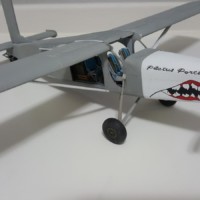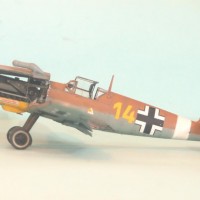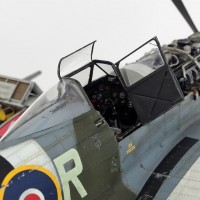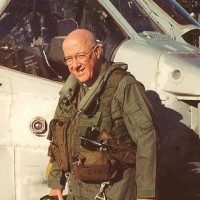Camouflage & Markings: Republic P-47 Thunderbolt over India, Burma & Java
The Republic P-47 Thunderbolt was one of the most rugged and heavily armed fighter-bombers of World War II. Although it was primarily used by the United States Army Air Forces, the Royal Air Force also operated the aircraft, particularly in the Southeast Asian Theatre, including India & Burma.
Background: RAF and the P-47 Thunderbolt
The P-47 was provided to the RAF under the Lend-Lease program. The RAF received around 830 P-47s, where they were designated as Thunderbolt Mk I (for P-47D-22 and earlier variants) and Thunderbolt Mk II (for P-47D-25 and later variants).
Deployment in India & Burma
The RAF used the Thunderbolt extensively in the Burma Campaign, which was a critical part of the Allied effort to expel Japanese forces from Southeast Asia. The P-47 was introduced into service in Burma in early 1944, replacing earlier (and ageing) aircraft like the Hawker Hurricane and Curtiss P-40 Warhawk that had been less suited to the harsh conditions.
Key Roles and Operations:
The rugged nature of the P-47 made it ideal for close air support and ground-attack missions. Its ability to carry a large bomb load (up to 2,500 pounds) and the robust construction meant it could take significant damage and still return to base. The dense jungles of Burma often made close air support vital to ground operations, and RAF P-47s were instrumental in softening up enemy defenses during major battles.
The RAF used the Thunderbolt in a “cab rank” system, similar to the tactics employed with the Hawker Typhoon over Europe (incidentally, despite all the fame gained by the Typhoon, the Thunderbolt was a better suited aircraft for this role). This involved flying standing patrols close to the front lines, ready to provide immediate air support to ground forces.
Air Superiority:
Though primarily used for ground attack in Burma, the provision of external long-range fuel tanks also allowed them to escort Liberator raids deep into Burma, and Dakotas on their vital transport missions. Bomber escorts resulted in sporadic, brief skirmishes with the Japanese Army Air Force (JAAF). The Thunderbolt proved well capable of taking on Japanese fighters in air-to-air combat. Its rugged design and eight .50-calibre machine guns gave it a formidable presence in air combat, if not in dogfighting - its heavy weight limited its agility compared to more nimble Japanese fighters.
Long Range and Endurance:
The P-47's ability to carry external fuel tanks gave it an exceptional range, which was crucial in Burma, where the vast distances between air bases and combat zones made extended range a significant asset.
The jungle terrain and the monsoon weather in Burma created tough operational conditions. The rugged P-47 proved relatively well-suited for these challenges although the heat and humidity did cause maintenance problems for all aircraft. Its durability, firepower, resilience in ground-attack roles and cockpit comfort made the Thunderbolt highly respected by the RAF pilots who flew it in Burma.
Notable RAF Squadrons:
Several RAF squadrons flew the P-47 Thunderbolt over Burma, including:
- No. 5 Squadron RAF
- No. 30 Squadron RAF
- No. 34 Squadron RAF
- No. 42 Squadron RAF
- No. 60 Squadron RAF
- No. 79 Squadron RAF
- No. 113 Squadron RAF
- No. 123 Squadron RAF
- No. 134 Squadron RAF
- No. 135 Squadron RAF
- No. 146 Squadron RAF
- No. 258 Squadron RAF
- No. 261 Squadron RAF
These squadrons were deployed as part of the RAF Third Tactical Air Force (3rd TAF), which supported the 14th Army in its operations in Burma. They played a crucial role in supporting the 14th Army's advance with tactical air support during key operations like the Battle of Imphal and the recapture of Burma.
After the war, the Thunderbolts remained in service with the RAF until 1946. The Thunderbolts were briefly deployed in Java as part of the post-war efforts to restore order and assist in the re-establishment of colonial administration.
This comprehensive collection of color profiles was researched and drawn by Mr. Rick Kent, a former librarian and curator at the RAF Museum in Hendon. Used here with the author's kind permission.


































Thanks a lot for sharing, Martin @editor
Pleased to do, @johnb
I have always loved the SEAC Thunderbolt camouflage. The first boxing of the Revell 1/32 razorback had box art rendering the dark earth/ dark green scheme. The Third Tactical Air Force being an umbrella organization in the CBI is something I have not heard of before now. And the Desert Air Force being the 1st Tactical Air Force is new to me as well.
Hi Russel, thank you. Well, if you want a combat Thunderbolt in RAF markings, these are the ones, and I agree that the camouflage is attractive - even though as you can see in the profiles, the variation was rather limited! 🙂
A great article containing very useful information, Martin!
Thanks, @fiveten!
Awesome. I built a bubbletop and razorback from the No 73 Operational Training Unit (OTU) Royal Air Force (RAF) based at RAF Fayid in Egypt